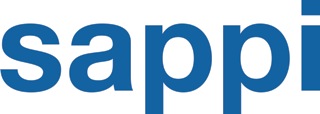A Letter From Sappi North America President and CEO Mark Gardner
Gardner emphasizes success, paves path forward

Sappi North America saw many successes in 2017 despite challenging market headwinds. To our employees, customers and other partners whose dedication contributed to those successes, I thank you.
Our focused strategy and continued investment in our assets and operations set the foundation for our business success, but the nimbleness of our team in responding to changing markets with new products, new services and new ways of doing business really made the difference. That same agility and focus will define our performance in 2018 and beyond, ensuring that we meet our business plan and set new standards of excellence.
Safety
Safety remains our single most critical priority. In 2017, we achieved a Lost Time Injury Frequency Rate of 0.43, which is a 38 percent improvement over last year and well surpasses the top quartile of LTIFR performance for US paper mills (0.6). This past November, AF&PA awarded our Cloquet Mill its 2017 Sustainability Award for Safety recognizing its milestone achievement of over two million hours worked without a lost-time injury.
Employees
Investment in our people is key to our success. In 2017, employees received an average of 80 hours of training, and employee engagement, as measured by a bi-annual survey, saw signifi cantly improved results driven by higher participation and employee ambassador programs, enhanced communication, corporate volunteerism and training.
Environmental Stewardship
Since establishing rigorous fi ve-year goals in 2014 to focus our waste reduction and effi ciency efforts, we have already achieved a 2.0 percent reduction in energy intensity, well on our way to achieving a 5 percent reduction by 2020. Reduction in pulp mill raw material waste was even more impressive, with a 17.8 percent drop from the 2014 baseline, already well exceeding the 2020 goal of 10 percent. Paper mill waste reduction is a priority and we remain committed to a 5 percent reduction by 2020.
Business and Strategic Success
Return on Net Operating Assets, our measure of sustainable business success, was 4.7 percent in 2017; down slightly from the previous year, due in large part to very weak operating rates and price declines for the graphics business. Strong positive momentum was established by the fourth quarter, with increased profi tability from our dissolving pulp and packaging businesses, as well as improved graphics pricing benefi ting overall results.
Importantly, the strategic choices we made in 2017 will pay off in stronger returns in 2018 and beyond. Investment in building strong corporate and product brands is paying off in improved market position, while cost control strategies have established a sustained competitive advantage. The rebuild of Paper Machine 12 at Cloquet, the new Somerset woodroom and the ongoing rebuild of Paper Machine 1 at Somerset to make new packaging products all set the stage for our evolution to a high-growth, high-margin diversifi ed company.
Outlook for 2018 and Beyond
While there is no single formula for success, I fi rmly believe that our commitments on three fronts will go a long way in achieving sustained success.
1. Taking the long view. If we are low cost now, what will it take to remain low cost and competitive in the future? Do our lines of business and products anticipate new patterns of demand and consumption? Are our employees trained and empowered only to meet the pressures of today, or are we inspiring them to create and innovate? These are the hard questions for any business, and the answers must be grounded in focused actions based on rigorous analysis and debate.
2. Establishing and maintaining trust with our customers and our communities. It’s becoming increasingly important to demonstrate that our ethical commitments to honesty, integrity and reliability don’t start and stop at our door, but extend to all of our important supply partners. Sappi North America has been committed for years to third-party certifi cation systems to ensure that our pulp and wood supplies are sustainably managed; we also invest in ISO and other certifi cation programs to ensure we meet customer expectations beyond mere legal compliance.
3. Being open to change. No strategy can anticipate every risk or challenge. The ultimate mark of a successful company is to have the courage to admit when a plan isn’t working, or that actions simply aren’t enough of the right things. Being open to change, being quick to respond, listening to customers and collaborating on creative solutions, all are the hallmarks of a truly sustainable company.
In Closing
Let me once again thank all of you who share our vision and work alongside us to achieve our goals. The year ahead will be full of challenges but also opportunities to reach more customers in markets new to us, and to serve existing customers in more relevant ways. As always, it will be a team effort, and I know I can count on the best team in the industry to make it happen.
Mark Gardner
President and CEO, Sappi North America

